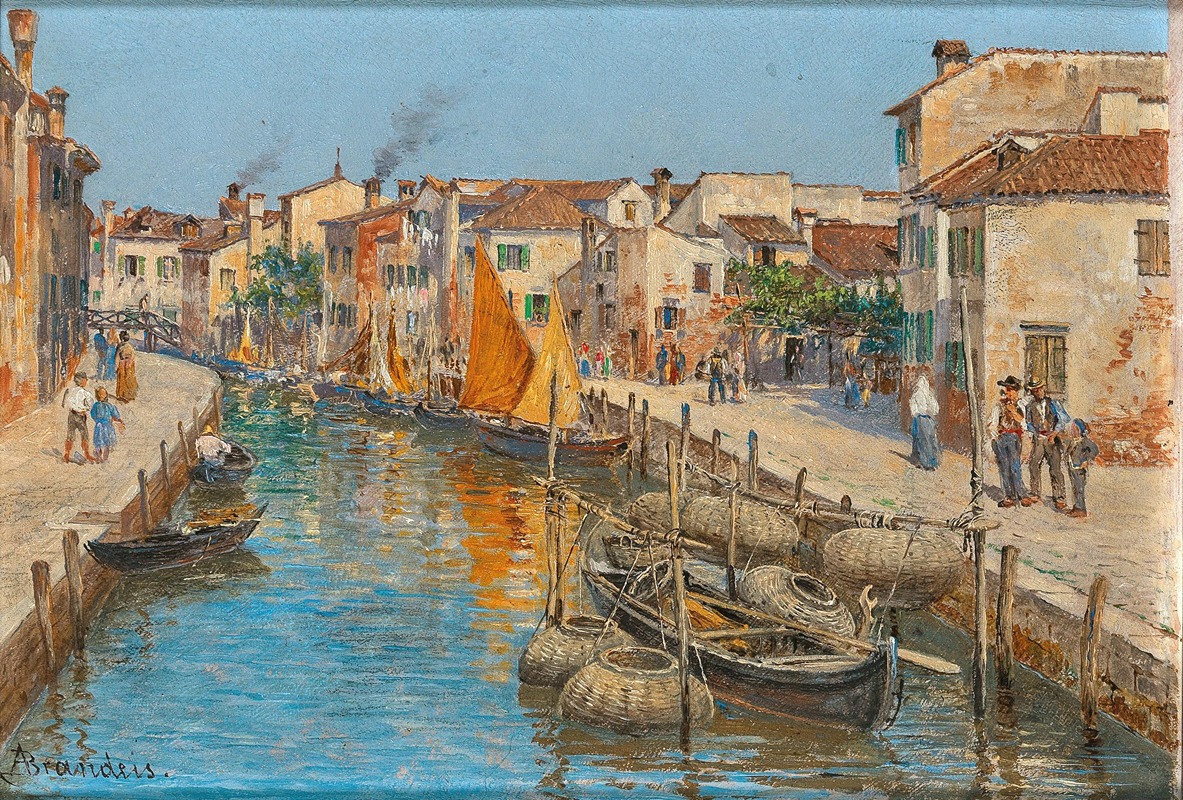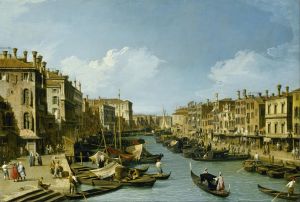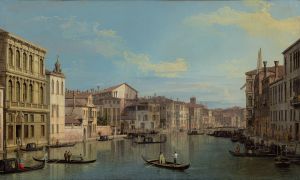
Venice
A hand-painted replica of Antonietta Brandeis’s masterpiece Venice, meticulously crafted by professional artists to capture the true essence of the original. Each piece is created with museum-quality canvas and rare mineral pigments, carefully painted by experienced artists with delicate brushstrokes and rich, layered colors to perfectly recreate the texture of the original artwork. Unlike machine-printed reproductions, this hand-painted version brings the painting to life, infused with the artist’s emotions and skill in every stroke. Whether for personal collection or home decoration, it instantly elevates the artistic atmosphere of any space.
Antonietta Brandeis was a Czech-Italian painter known for her detailed and vibrant depictions of Venetian scenes. Born in 1848 in Miskovice, Bohemia, she moved to Venice to study at the prestigious Academy of Fine Arts. Brandeis became one of the few female artists of her time to gain recognition for her work, particularly her cityscapes and architectural paintings.
"Venice" by Antonietta Brandeis is one of her many works that captures the essence of the city she adopted as her home. While specific details about this particular painting are scarce, Brandeis's oeuvre is characterized by meticulous attention to detail and a keen eye for the interplay of light and shadow. Her paintings often feature iconic Venetian landmarks, canals, and everyday life scenes, rendered with a sense of realism and vibrancy that brings the city to life.
Brandeis's work is part of the broader 19th-century tradition of vedute, a genre of highly detailed, usually large-scale paintings of cityscapes or vistas. This tradition was particularly popular in Venice, a city that has long captivated artists with its unique architecture and atmospheric light. Brandeis's paintings fit within this tradition, yet they also stand out for their precision and the artist's ability to capture the mood and character of Venice.
Throughout her career, Brandeis exhibited her work in various European cities, including Vienna and Munich, gaining a reputation for her skillful renderings of Venetian scenes. Her paintings were well-received by both critics and the public, and she became known for her ability to convey the charm and beauty of Venice through her art.
Brandeis's connection to Venice was not only professional but also personal. She spent much of her life in the city, and her deep affection for it is evident in her work. Her paintings often depict the city's famous landmarks, such as St. Mark's Basilica, the Grand Canal, and the Rialto Bridge, as well as lesser-known corners of Venice that capture the everyday life of its inhabitants.
Despite the challenges faced by women artists in the 19th century, Brandeis managed to carve out a successful career for herself. Her work continues to be appreciated for its technical skill and its ability to transport viewers to the enchanting world of 19th-century Venice.
In summary, while specific information about the painting "Venice" by Antonietta Brandeis is limited, her body of work is celebrated for its detailed and atmospheric depictions of the city. Brandeis remains an important figure in the history of art, particularly for her contributions to the vedute tradition and her role as a pioneering female artist in a male-dominated field.


















